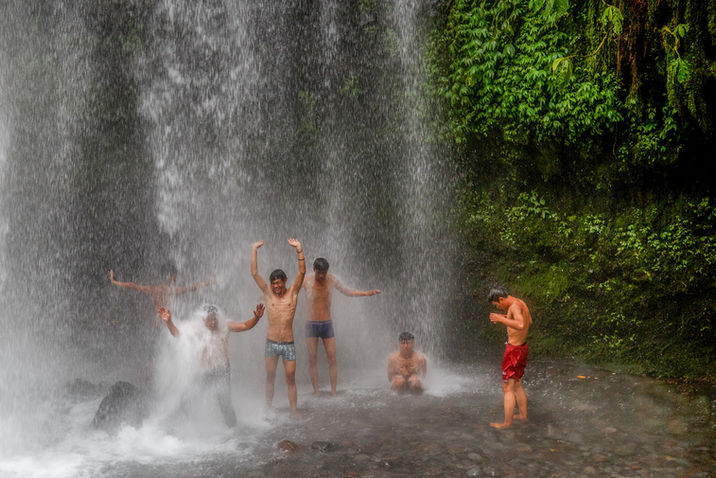
I N D O N E S I A

17,508 islands create the enigmatic archipelago of Indonesia.
The richness of culture and history makes it difficult to combine these diverse islands into one specific nation.
Java,
historical throne of booming Hindu and Buddhist communities, built temples atop mountains to reach higher into the heavens.
Komodo Island is the only habitat where the komodo dragon lives today.
The Komodo people went extinct in 1980, however now the residents are descendants of ex-convicts who were exiled to live on the island.
Kelimutu Volcano in the island of Flores is believed to house the spirits of young men and maidens.
In Sulawesi, structures called
tongkonans serve as the honorary ancestral homes, where bodies of the deceased stay
until a proper burial may occur. The family saves money for years, so they may slaughter buffalo, pig, and have an extravagant funeral, leading the soul into the afterlife with flair.
Rice terraces flank the mountainsides.
Early methods of farming positioned Indonesia as a center of trade for centuries BCE between China & India.
The Dutch East India Company inhabited Indonesia from 1610 til its bankruptcy in 1800. The Netherlands then took over and fought against the indigenous Indonesians, forcing them into a period of indentured servitude until 1870. In World war II, Japan occupied Indonesia, and after Japan's surrender, Indonesia was finally independent.
Prambanan temple, located in Yogyakarta, Java, was built as a Hindu temple to rival that of the nearby Buddhist temple, Borobodur.
Inaugurated in 856, the temple stands amongst fallen towers as a testament to the indelible strength of faith.
Bali
is the spiritual mecca of Hinduism
in Indonesia.
As Islam spread across the islands in the 13th century, many Hindus found solace in Bali.
Observance and respect of the Hindu religion is still seen in the many beautiful Hindu and Indic ceremonies held here.

























